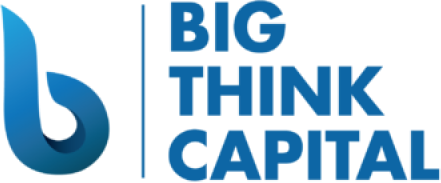Demystifying the Implication of Fed’s Recent Interest-Rate Decision on Your Small Business
Estimated Reading Time: 5 minutes
- Understand the impact of recent Fed interest rate decisions on financing options.
- Recognize the importance of cash flow management amid fluctuating rates.
- Explore flexible funding options like working capital advances and lines of credit.
- Stay informed and consult experts to navigate financial strategies.
Table of Contents
- Understanding the Federal Reserve’s Interest Rate Decisions
- Impacts on Small Business Financing
- Three Practical Takeaways for Small Business Owners
- How Big Think Capital Can Help
- Call to Action
Understanding the Federal Reserve’s Interest Rate Decisions
The Federal Reserve (often referred to as the Fed) plays a crucial role in shaping economic conditions in the U.S. through its monetary policy. When the Fed changes interest rates, it influences borrowing costs across the economy. A lower interest rate typically means cheaper loans and credit, which encourages consumer spending and investment in businesses. Conversely, higher interest rates can make borrowing more expensive, leading to reduced spending and investment.
As of early 2025, the Fed has maintained a cautious approach. Recent decisions to keep interest rates stable have provided some relief to small businesses grappling with the challenges of inflation and fluctuating costs. However, economic indicators suggest that the Fed might adjust rates in response to economic growth, job creation, and inflationary pressures.
Impacts on Small Business Financing
1. Cost of Borrowing
The central takeaway from the Fed’s decisions is the direct impact on the cost of borrowing. Small businesses relying on financing for working capital or equipment purchases must carefully evaluate the implications of these changes.
- Low Interest Rates: While low rates can benefit small businesses through cheaper access to capital, business owners should be wary of over-leveraging. This period is ideal for investing in growth initiatives but requires diligent planning to ensure that borrowing aligns with long-term business strategies.
- Rising Interest Rates: Conversely, if the Fed decides to increase rates, small businesses may find themselves confronted with higher loan costs. This scenario necessitates a shift in financing strategy. Business owners should explore options such as fixed-rate loans to secure predictable repayment plans during these fluctuating times.
2. Working Capital Advances and Lines of Credit
Given the potential changes in interest rates, working capital advances and lines of credit may become increasingly appealing options for small businesses. Here’s why:
- Flexibility: Lines of credit provide immediate access to funds when needed, allowing businesses to respond quickly to unexpected expenses or investment opportunities. This can be especially crucial in a fluctuating economic environment.
- Cost-Efficiency: Working capital advances offer funding based on future sales. In a low-rate environment, these advances can be a cost-effective way to manage cash flow without taking on long-term debt. However, as rates rise, the cost associated with these advances may increase, making it essential to weigh the overall financial implications.
3. Managing Cash Flow
Effective cash flow management is vital for small business survival, particularly amid changes in interest rates. Maintaining a solid financial foundation can help your business navigate economic uncertainties. Here are actionable tips to consider:
- Monitor Cash Flow Regularly: Utilize accounting software to keep track of your income and expenses. Regular monitoring allows you to identify when to draw from lines of credit or seek working capital advances.
- Establish a Cash Reserve: Aim to build a cushion that can help you manage operational costs during challenging times. A cash reserve can be invaluable if borrowing costs increase unexpectedly.
- Forecast Financial Needs: Anticipate future needs and expenses. This could include evaluating upcoming seasonal fluctuations in sales, inventory requirements, or expansion plans.
Three Practical Takeaways for Small Business Owners
- Assess Your Capital Needs: Evaluate your current financial situation and future operational needs. Understanding when and how much financing you require is crucial for determining the best option between working capital advances and lines of credit.
- Stay Informed: Keep abreast of interest rate trends and Fed announcements. Understanding the economic landscape can help you make informed decisions regarding your financing strategy.
- Consult Experts: Engage with financial advisors or lending experts to better understand your options. A knowledgeable partner, like Big Think Capital, can provide you with tailored solutions that align with your business goals.
How Big Think Capital Can Help
As you navigate the complexities of securing financing in light of recent Fed interest rate decisions, Big Think Capital stands ready to assist. We specialize in providing small businesses with access to various funding products tailored to meet your unique needs. Whether you are considering a working capital advance to cover immediate operational costs or exploring a line of credit for flexibility, our funding experts can guide you through the process.
By leveraging our deep industry expertise, you can find the right financial solutions to help your business thrive in any economic landscape. Our dedicated team is committed to equipping you with the tools and resources necessary to make informed financing decisions.
Call to Action
In conclusion, understanding the implications of the Federal Reserve’s interest rate decisions is essential for small business owners looking to secure financing. By staying informed and strategically leveraging funding options like working capital advances and lines of credit, you can position your business for success in an ever-changing economic environment.
Take the next step toward securing your business’s financial future. Visit us at bigthinkcapital.com to learn more about your financing options or speak with one of our funding experts today. Together, we can help you navigate the challenges and seize the opportunities that 2025 has to offer.
Frequently Asked Questions
What should small businesses consider when applying for loans?
Small businesses should consider their current financial health, future cash flow projections, and market conditions before applying for loans. Preparing detailed documentation can also improve chances of approval.
How can small businesses benefit from low interest rates?
Low interest rates can reduce borrowing costs, making it cheaper for small businesses to finance growth initiatives or manage operational expenses. However, careful planning is essential to avoid over-leveraging.
Why is cash flow management important during changing interest rates?
Cash flow management is critical as it helps businesses maintain liquidity during periods of increased borrowing costs. Proactive cash flow monitoring allows businesses to make informed financial decisions.






